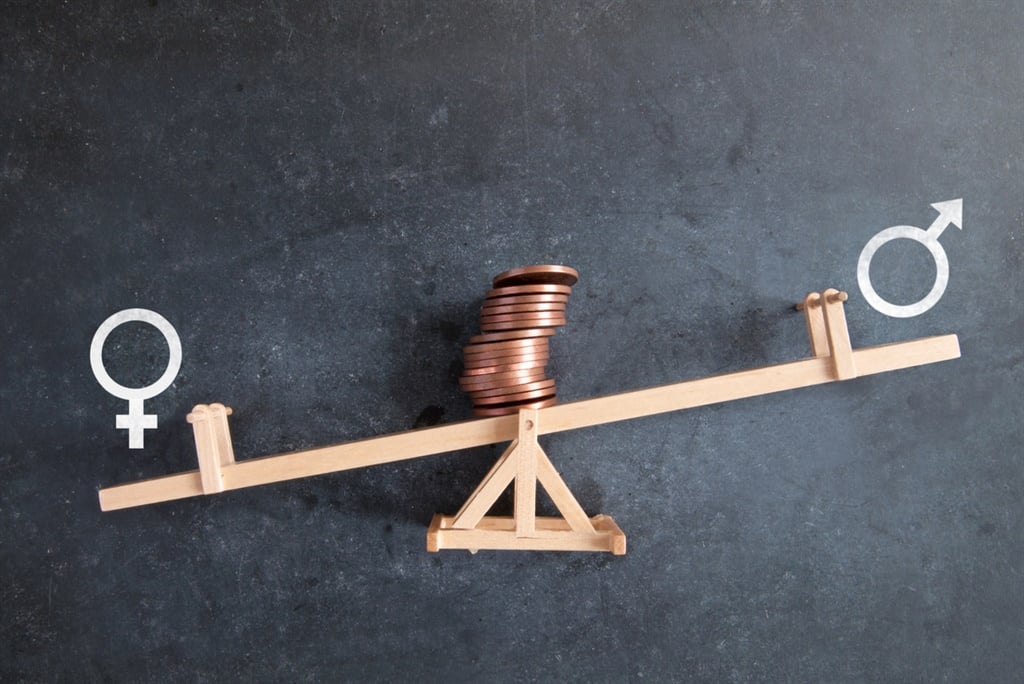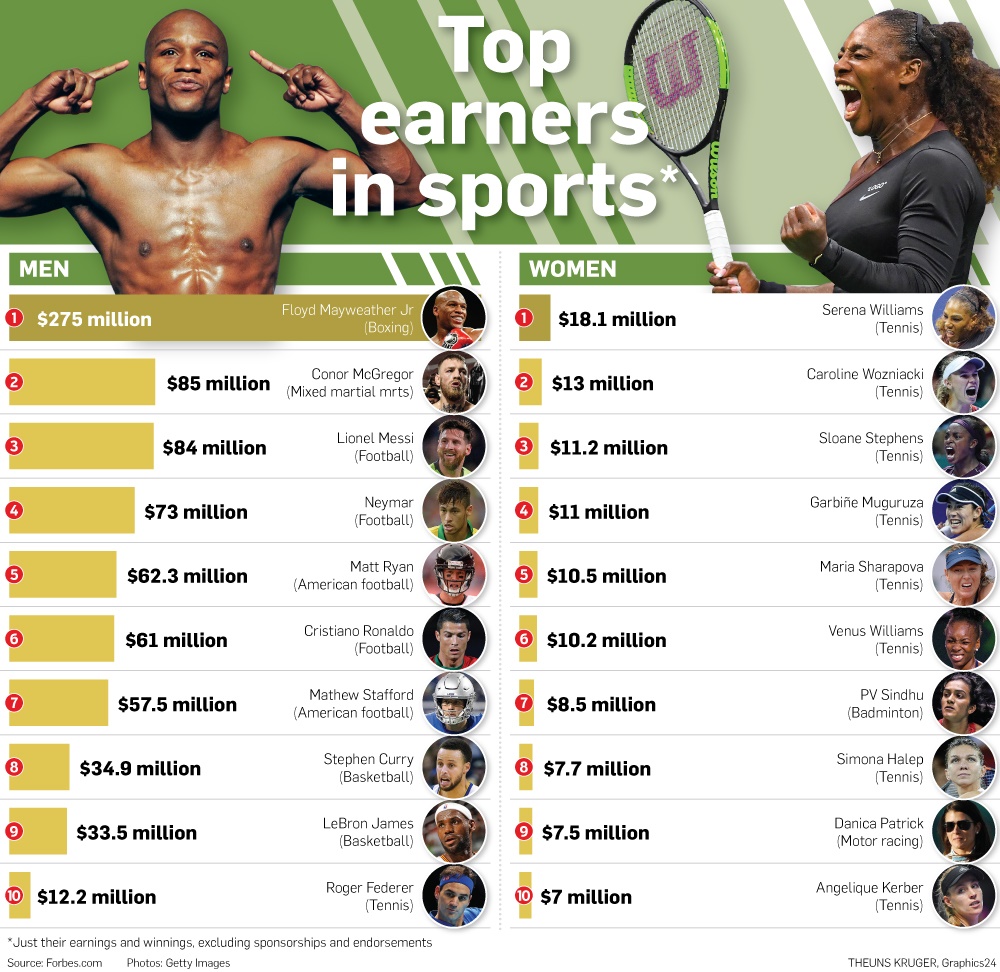
Great strides have been made globally in pursuit of democracy and gender equality, however, as S’Busiso Mseleku finds out, the difference in remuneration between women and men in sport is embarrassing.
When Wimbledon agreed to offer equal prize money a decade ago, only nine out of the 44 sporting codes that remunerate athletes paid equally
While Banyana Banyana’s amazing performance at this year’s Afcon has led to an outcry that they should be paid the same as Bafana Bafana, the global picture shows that we are still miles away from parity in sports salaries.
You don’t have to look any further than the two graphics on this page, which show that the highest-earning man– and we are talking earnings only, not endorsements – is US professional boxer Floyd Mayweather Jr, who has pocketed a cool $275 million (R3.8 billion), compared with number one woman earner Serena Williams at $18.1 million.
The prize pool for this year’s World Cup played in Russia between June 14 and July 15 was a whopping $400 million, while the women who make it to France for their version next year will have to share a mere $30 million among them.
While the latter is a 100% jump from the previous amount that was in the kitty for the 2015 Canada Women’s World Cup, it is still like a drop in the ocean.
Tennis is so far one of the few sporting codes that pay equal prize money for men and women for similar achievements.
The crusade was led by the US Open, which became the first tennis major to level the playing field, and all others, including the Australian Open, French Open and Wimbledon, have since followed suit.
In an article written for Al Jazeera News in January, columnist David Cox said: “When Wimbledon agreed to offer equal prize money a decade ago, only nine out of the 44 sports that remunerate athletes paid equally. That number is now 35.”
Earlier this year, Safa revealed that: “Banyana Banyana’s sponsors, Sasol, have put together a remuneration structure for the 21 players selected for the upcoming Women’s Afcon.”
If they win the tournament, the players will share a performance bonus of R2 520 000, which is R120 000 per player.
If they come second, the players will share a performance bonus of R1 575 000, which is R75 000 a player.
A third-place finish would see the players share a performance bonus of R1 260 000, which is R60 000 a player.
By reaching last night’s final, the South African senior women’s team put themselves in the pound seats, where they could pocket either R75 000 or R160 000 each.
While this might look lucrative to some people, it pales in comparison to what Bafana Bafana get for reaching just the qualifiers.
When CAF restructured the prize money allocation for its different tournaments – with the Women’s Afcon being the only women’s tournament it hosts – it allocated $16.4 million to Afcon, $250 000 for Women’s Afcon, $1.5 million for the Under-23s, $1.2 million for the Under-20s and $620 000 for the Under-17s.
This means the women’s teams at this year’s tournament, which concluded last night, have less than half of what the national Under-17 national teams will share at their tournament.
Arguments that have been raised include that men attract bigger crowds and more television coverage.
In the same article, Cox mentioned that, in 2013, women’s sports received just 7% of television airtime.
The big challenge is changing people’s mind-sets.
As we speak, most global and national sports federation boards are so male-dominated that there is little to zero woman representation.
Fifa and Safa eventually had to insert clauses in their constitution for them to have women in their main decision-making bodies, allowing Ria Ledwaba to be voted in as one of four Safa vice-presidents this year.
Just last year, world tennis number one Novak Djokovic urged his fellow male tennis players to demand more prize money. His argument was that they should earn more than their women counterparts because they had a bigger following.
Cox also argued that “a lot of sponsors are beginning to realise that, for a relatively low price, you can reach a pretty good demographic of women”.
This would explain why Sasol is the only company sponsoring Banyana Banyana in South Africa, despite their successes.
Another startling statistic is that leading woman tennis player Williams is the only woman who appears on the list of the world’s 100 highest-paid athletes.
And how about this: US professional golfer Dustin Johnson’s caddie, Austin Johnston – the golfer’s younger brother – surpassed all but three of the top woman golfers with his earnings last year.
Case closed!




 Publications
Publications
 Partners
Partners









